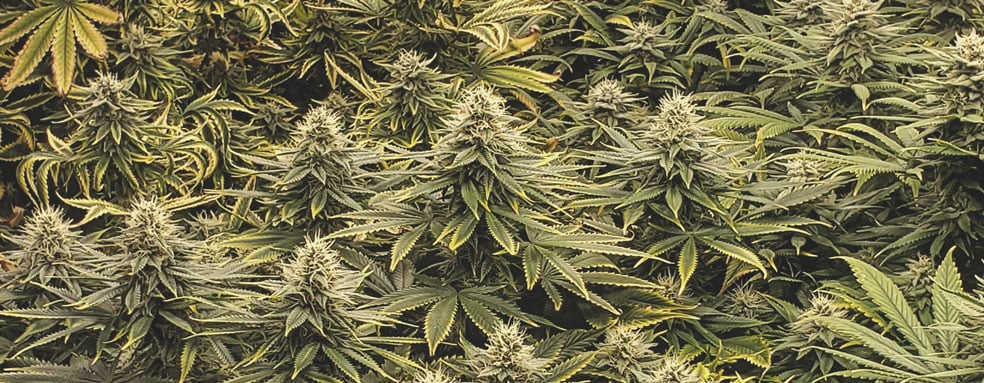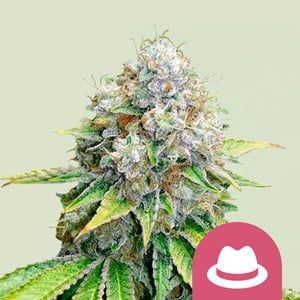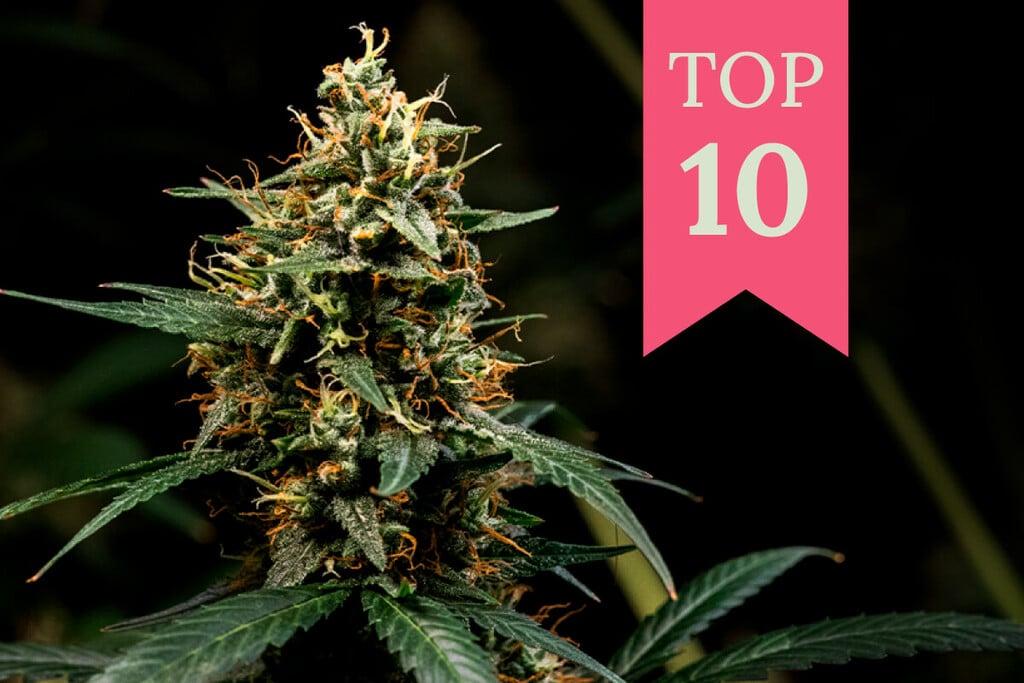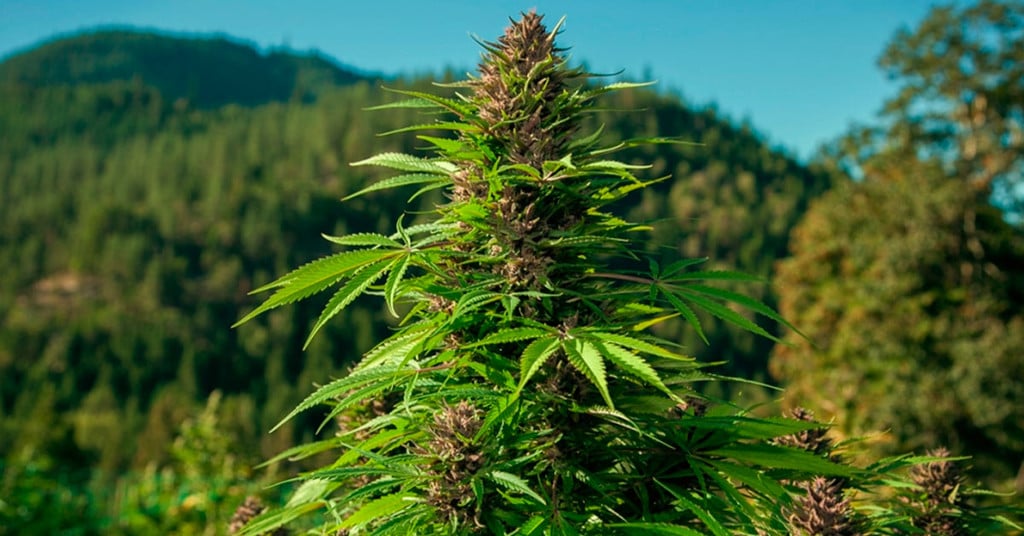.

Origin and Legacy of Hindu Kush: A True Cannabis Titan
Hindu Kush is the mother of many modern strains, and though it's been around for hundreds of years, growers and tokers still can't get enough of it. Rediscovered by Westerners in the 60s and 70s on the slopes of the Hindu Kush mountains, this cannabis variety boasts a distinct aroma and profoundly relaxing effects coupled with ease of growth.
Contents:
- Interesting facts about hindu kush
- Hindu kush genetics: indica or sativa?
- The history of hindu kush cannabis
- Effects and thc content of hindu kush
- Flavours and aromas of hindu kush
- How to grow hindu kush cannabis
- Legacy of hindu kush and its impact on the cannabis scene
- Hindu kush: a legend of cannabis past and present
Hailing from and named after the picturesque, snow-capped Hindu Kush mountain range that stretches from central and eastern Afghanistan into northwestern Pakistan and southeastern Tajikistan, this formidable indica is a cannabis force to be reckoned with. It’s prized for its stable genetics, relaxing effects, and unmistakable, classic aroma, all of which have secured it a spot among the top weed strains of all time. Thanks to years of inbreeding, the Hindu Kush strain is robust and can be grown in a variety of environments with equal success, producing good yields and plenty of sparkling trichomes. Read on to discover its rich history and legacy.
Interesting Facts About Hindu Kush
Hindu Kush is a favourite among hash lovers due to the glistening, thick layer of resin on the buds. This trait was developed as a response to the strain’s harsh native environment, protecting it from low temperatures and other difficult weather conditions.
Meanwhile, growers cherish this variety for its robust genetics and uncomplicated, easygoing growing cycle. Furthermore, the THC content in Hindu Kush weed is generally high, amounting to up to 20%, resulting in pronounced relaxing effects that work their way all around your body. Besides potency, tokers also love the distinctive aroma this strain emanates, with musky, earthy notes dancing on the tongue and spicy, sandalwood undertones complementing the scent perfectly. No wonder this strain made it onto High Times’ list of the 25 best varieties of all time.
.jpg)
Hindu Kush Genetics: Indica or Sativa?
There are as many fans of indicas as there are of sativas, and there’s also a big fan base of balanced hybrids offering the best of both worlds. Where does Hindu Kush autumn when it comes to these categories? It’s a landrace indica plant—something it exhibits proudly in its morphology.
In terms of appearance, plants are shorter and bushier than most sativas. A true indica in the physical stone it produces, Hindu Kush offers head-to-toe relaxation, and is best suited to chill activities like meditation, watching films, or just sitting on the sofa with your feet up.
The History of Hindu Kush Cannabis
After growing wildly in its native region for potentially hundreds of years, Hindu Kush was eventually brought to the United States in seed form by travellers in the 1960s and 1970s. The variety became an instant success, and breeders quickly got to work inbreeding the genetics to ensure uniform specimens. Furthermore, Hindu Kush has been bred with many other strains over the years, forming the genetic backbone of all manner of modern cannabis varieties.
As the climate of the Hindu Kush mountains is harsh, plants adapted to thrive in less than perfect environments, and are indifferent to temperature changes. Moreover, they don’t need much time to mature their flowers. Hindu Kush plants are short, dense, and hardy, with broad green leaves and a bushy structure.
Local farmers have been growing cannabis for generations, after which they process it into the world’s most famous hashish. Although Afghanistan is believed to have one of the oldest cannabis cultures in the world, the production and sale of hashish changed greatly in the 1970s, when, due to international pressure, many cannabis farms were destroyed and farmers arrested.


How Exactly Did Hindu Kush Make It to the West?
Western travellers are largely responsible for disseminating Hindu Kush genetics around the world. They did so upon finding seeds on the infamous “Hippie Trail”. This overland route started in Europe and led through South Asia and countries such as Afghanistan, Pakistan, India, Nepal, Sri Lanka, Bangladesh, culminating in Thailand.
As the name suggests, it was particularly popular with members of the hippie subculture, and the goal was to travel for as long as possible, doing it on a shoestring. The trail enjoyed popularity from the mid-1950s to the late 1970s, and besides people hitchhiking, there were cheap private buses and plenty of cafes and cheap accommodation on the way. As marijuana was also very popular back then, many travellers were searching for new weed varieties.
Dutch seedbanks claims to have been in possession of Hindu Kush genetics since the 1980s, but sources don’t mention any particular breeder as the first person to introduce the strain to the Western world.
What’s Landrace Cannabis?
Landrace cannabis strains are wild-growing plants that have adapted to a particular region of the world. These plants evolve in such a way that they are able to not only survive, but thrive in the area, which means they carry strong, robust genetics.
Hindu Kush is such a plant, and its genetics have made their way into many modern varieties that we know and love. Other landraces from the area include Afghani, Mazar-i-Sharif, and Lashkar.
Effects and THC Content of Hindu Kush
A pure indica, the Hindu Kush strain doesn’t disappoint in the slightest when it comes to the smoking experience. The THC content developed by its flowers sits at around 17–20%, packing a decent punch.
A few tokes will treat you to a soothing, powerful body stone that will thoroughly relax your mind and body. All worries and tension will be washed away, and you will be ready to kick your feet up and enjoy the afternoon or evening ahead, free of tension and light as a feather.
Hindu Kush is a great choice for the evening, and it’s best enjoyed after you’ve cleared your to-do list. Plan a quiet night in, perhaps with a movie and plenty of snacks at hand. It makes for a superb lazy weekend strain too, when all you want is to take it easy and enjoy peaceful relaxation.


Flavours and Aromas of Hindu Kush
You know it’s Hindu Kush weed as soon as you take the first whiff. The terpenes in these flowers are plentiful, creating an unmistakable fragrance.
Citrus-scented limonene is the most prominent terpene in the aromatic bouquet of Hindu Kush. Caryophyllene and pinene are also quite abundant, providing aromas of pepper and pine respectively.
Besides being citrusy, spicy, and piney, the aroma of Hindu Kush has hints of sandalwood and other nuances—definitely what dank weed should smell like. In terms of flavour, you can expect sweet notes mixed with herbs and citrus, making for a well-rounded, pleasant experience.
The Entourage Effect in Hindu Kush
The cannabis plant is full of phytochemicals that are proposed to interact with one another in beneficial ways when consumed. This synergistic relationship is known as the entourage effect. These chemicals include the likes of THC and CBD, but also aromatic terpenes. Let’s look at the entourage effect potential of Hindu Kush:
- Terpenes like limonene and pinene are said to enhance the potency[1] of THC in CB1 receptor activation.
- Pinene is claimed to aid memory[2], potentially minimising the effects of THC on that process.
- Limonene has been reported to boost serotonin and dopamine levels[3].
- Caryophyllene is unique in the sense that it interacts with CB2 receptors[4] that are associated with pain and inflammation.

How to Grow Hindu Kush Cannabis
If you’re new to the growing game or looking to cultivate your first photoperiod variety, you shouldn’t be afraid of Hindu Kush plants. In fact, it’s a beginner-friendly strain, and it will surely thrive in the hands of an experienced cannabis grower in any setup, including hydroponics. You can rear this variety indoors or out with equal success, even in less than desirable conditions. Hindu Kush is hardy and robust, reaching approximately 150cm and producing up to 400g/plant. Perfect for a SOG, this resinous variety usually forms a large central cola.
Hindu Kush enjoys 16–18 hours of sunlight during vegetative stage, with relative humidity at 60–70%. Although generally ready for flowering after 3 weeks of veg, let it grow longer for best results. Flowering is quite fast, taking 7–8 weeks indoors. During this stage, humidity should be reduced to 40–50% for early flowering, and to 30–40% for the last couple weeks before harvest. Outdoors, plants will be ready for the shears by the end of September.
Legacy of Hindu Kush and Its Impact on the Cannabis Scene
Hindu Kush is not only a prized strain on its own, but it’s also been used extensively in cannabis breeding. There are plenty of modern varieties carrying its genetics, making Hindu Kush a genetic backbone of cannabis.
Let’s take a look at some of its most prominent offspring.
OG Kush

OG Kush contains influences from several great weed strains, including Hindu Kush, Chemdawg, and Lemon Thai. Associated with sunny California, OG Kush has a citrusy, fruity aroma with a good dose of pine and fuel. It’s a 75% indica and 25% sativa and it produces uplifting effects powered by 19% THC.
Reaching 150cm indoors and up to 220cm outdoors, this strain pleases the eye with luscious colours, and it doesn’t disappoint when it’s time to harvest either. In optimal conditions, it can produce up to 475g/m² indoors and 550g/plant under the sun. OG Kush needs 7–9 weeks to mature its flowers in a grow room, while in a garden it’s ready for the shears in October.
OG Kush
|
|
Chemdawg x Lemon Thai x Pakistani Kush |
|
|
425 - 475 gr/m2 |
|
|
90 - 160 cm |
|
|
7 - 9 weeks |
|
|
THC: 19% |
|
|
Sativa 25% Indica 75% |
|
|
500 - 550 gr/plant |
|
|
180 - 220 cm |
|
|
October |
|
|
Calming, Uplifting |
Candy Kush Fast Flowering

This delicious-sounding strain stems from Sweet Special and OG Kush—and it’s a fast flowering version, which means growers can harvest its fragrant flowers within 7 weeks of flowering! Besides speed, Candy Kush boasts a fairly balanced genetic profile of 40% sativa and 60% indica, producing uplifting and relaxing effects. Scrumptious terpenes with aromas of sweet candy and fruit accompany the high, complementing the experience.
Candy Kush is a breeze to grow, so both novices and experienced growers can expect good results. Plants remain compact indoors, maxing out at a stealthy 100cm, while outdoors they can reach 170cm. Come harvest time, this variety continues to please, producing up to 525g/m² in controlled environments and up to 500g/plant outdoors in September.
Candy Kush Express (Fast Flowering)
|
|
Sweet Special x O.G. Kush |
|
|
475 - 525 gr/m2 |
|
|
60 - 100 cm |
|
|
7 - 9 weeks |
|
|
THC: 18% |
|
|
Sativa 40% Indica 60% |
|
|
450 - 500 gr/plant |
|
|
100 - 170 cm |
|
|
Early September |
|
|
Physically Relaxing, Stoned |
Buy Candy Kush Express (Fast Flowering)
Purple Queen

This royal member of the Purple family was created by marrying Hindu Kush and Purple Afghani. A pure indica, Purple Queen has an intense aroma blending pine and fuel for a dank experience. Its powerful physical effects (courtesy of 22% THC!) go hand in hand with the heavy aroma, leaving you stuck to your sofa and in need of some snacks.
In the grow room, this variety stays under 100cm in height, which means it can fit in pretty much any space with ease. It doesn’t require much expertise to cultivate, and if you give it some TLC, you’ll be rewarded with good yields after 8 weeks of flowering (or in mid-September outdoors). Harvests can amount to 500g/m² indoors or up to a whopping 700g/plant outdoors.
Purple Queen
|
|
Hindu Kush x Purple Afghani |
|
|
450 - 500 gr/m2 |
|
|
80 - 120 cm |
|
|
8 - 9 weeks |
|
|
THC: 22% |
|
|
Sativa 25% Indica 75% |
|
|
650 - 700 gr/plant |
|
|
175 - 210 cm |
|
|
October |
|
|
Calming, Euphoric |
Royal Kush Automatic

Those who prefer autos also have a variety of high-quality Hindu Kush descendants to choose from, and Royal Kush Automatic is one such strain. Stemming from OG Kush and a ruderalis specimen, this neat autoflower offers a nice mix of effects, catering to both mind and body. It contains 13% THC and boasts a rich aroma of citrus, fruit, and pine with earthy and peppery undertones.
Royal Kush Automatic is a joy to cultivate, as it’s not only fast, but also compact. Plants remain at very manageable heights of 60–90cm indoors and produce up to 350g/m², while in the garden they can get as tall as 150cm and offer 170g/plant. Harvest time is 8–9 weeks after seeds sprout.
Royal Kush Auto
|
|
OG Kush x Ruderalis |
|
|
300 - 350 gr/m2 |
|
|
60 - 90 cm |
|
|
7 - 8 weeks |
|
|
THC: 13% |
|
|
Sativa 20% Indica 50% Ruderalis 30% |
|
|
120 - 170 gr/plant |
|
|
120 - 150 cm |
|
|
11 - 12 weeks after sprouting |
|
|
Clear, Physically Relaxing |
HulkBerry

Last but not least is the smashing HulkBerry, which is a mix of OG Kush and Strawberry Diesel genetics. These flowers are seriously yummy, with notes of citrus, pepper, herbs, and fuel dancing on your tongue as a THC content of 27% sends you to space. The high is mainly cerebral, lifting users up and clearing their mind.
When it comes to growing this superb specimen, you’re in for a fun ride, as HulkBerry can display several phenos. One leans more to the OG Kush side, one is more of a 50/50 mix between the parent strains, and a third one leans heavily toward Strawberry Diesel. Overall, this variety needs 9–10 weeks of bloom to be ready for harvest indoors, or till early October outdoors. In both environments it delivers rewarding harvests, with 450g/m² indoors and 700g/plant outdoors.
HulkBerry
|
|
OG Kush x Strawberry Diesel |
|
|
400 - 450 gr/m2 |
|
|
80 - 140 cm |
|
|
9 - 11 weeks |
|
|
THC: 27% |
|
|
Sativa 65% Indica 35% |
|
|
650 - 700 gr/plant |
|
|
160 - 200 cm |
|
|
Late September |
|
|
Clear, Uplifting |
Hindu Kush: A Legend of Cannabis Past and Present
We can safely say that Hindu Kush is a vital plant in cannabis culture, sustaining its influence through many modern strains. Its rich and long history only adds to the appeal and legendary status. Everyone has heard of this plant, and rightly so. When you have the opportunity to try these influential genetics, you should definitely jump at it. Classics never go out of style, and Hindu Kush proudly sits among very few cannabis giants.
- Cannabis terpenes synergize with THC to produce increased CB1 receptor activation https://www.sciencedirect.com
- The Cannabis Terpenes https://www.ncbi.nlm.nih.gov
- An Optimized Terpene Profile for a New Medical Cannabis Oil https://www.mdpi.com
- Caryophyllene https://www.sciencedirect.com














































